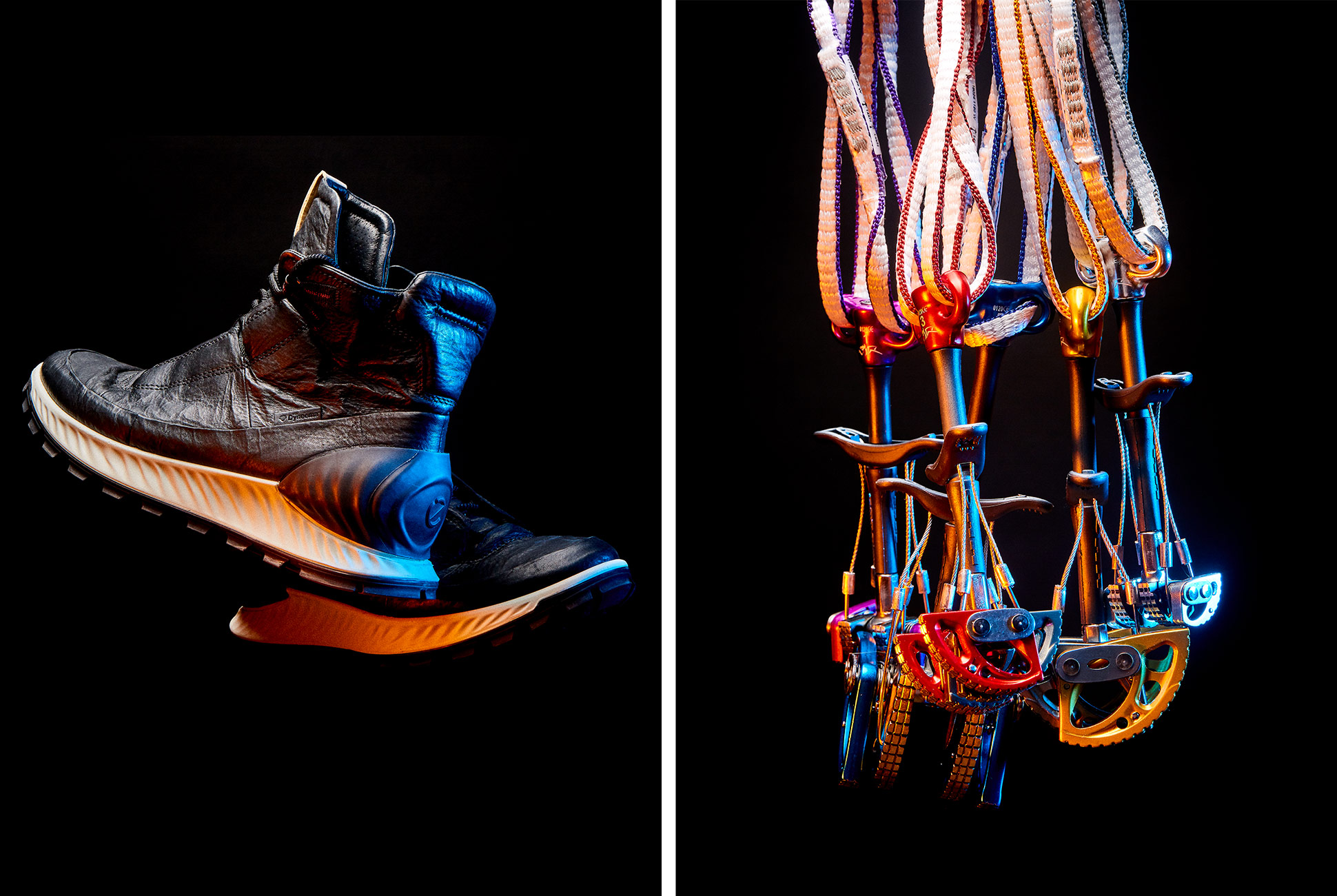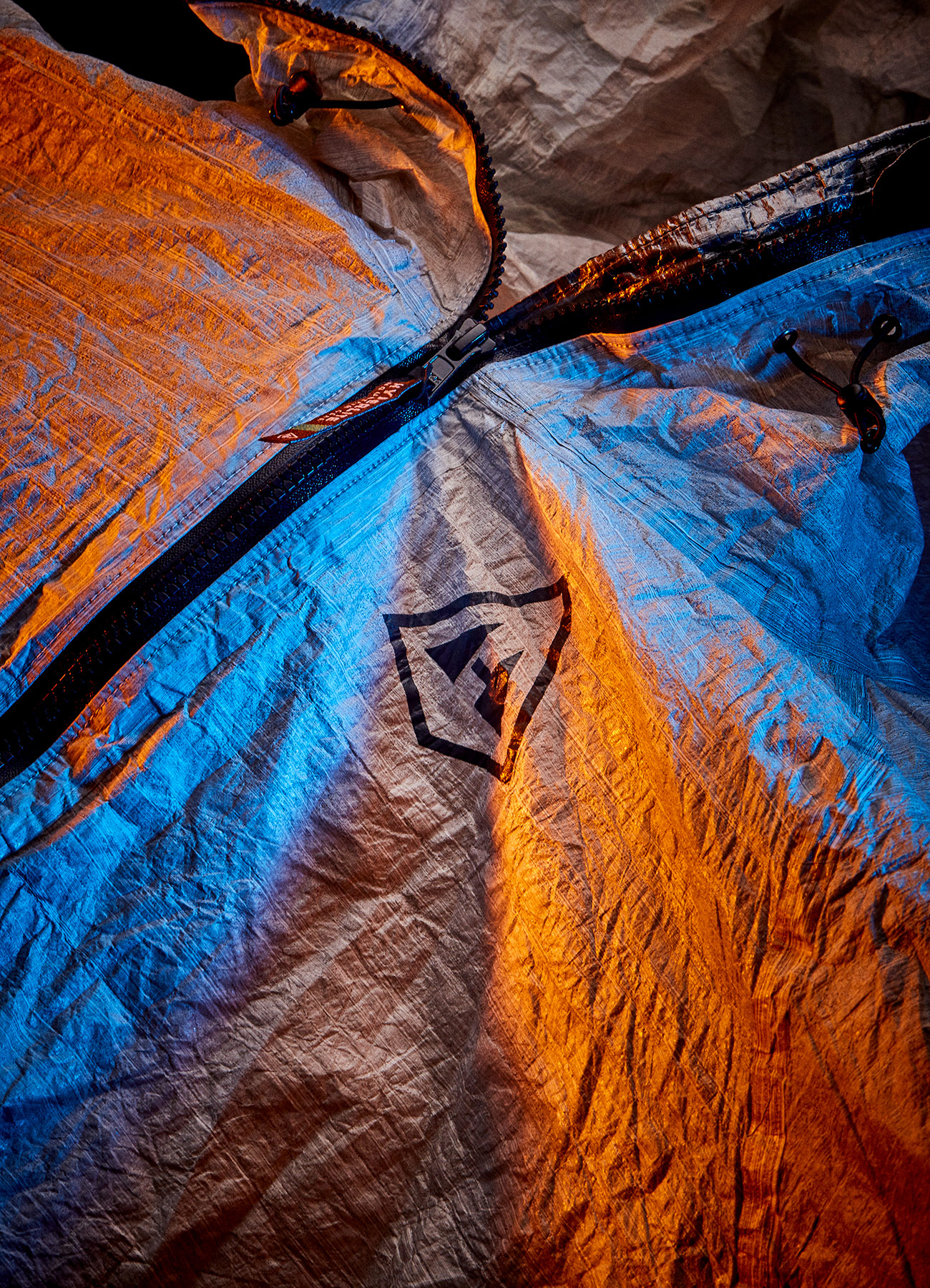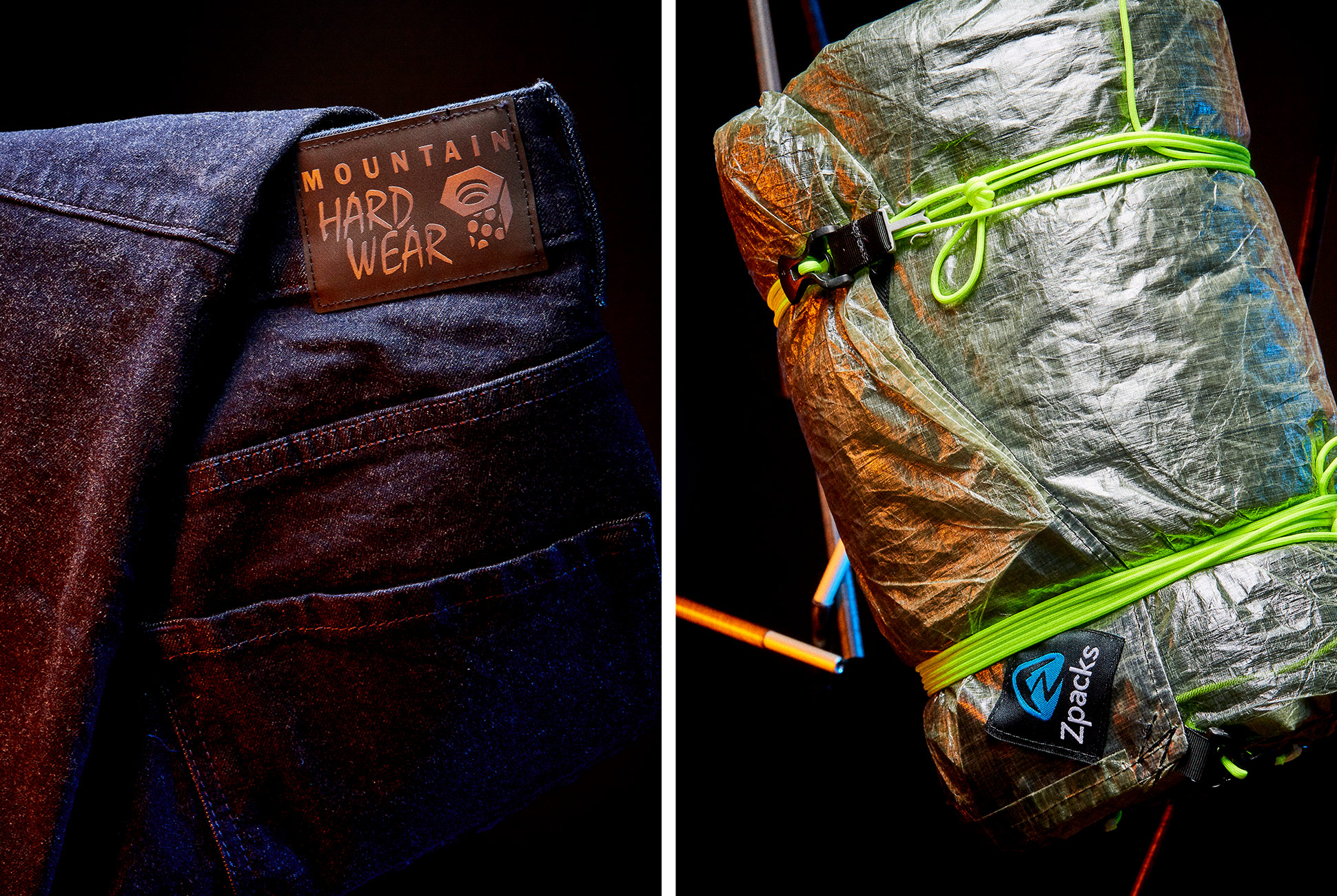From Issue Six of Gear Patrol Magazine.
Discounted domestic shipping + 15% off in the GP store for new subscribers.
Cuben Fiber. It sounds like dreamed-up sci-fi, an intergalactic MacGuffin upon which the latest Marvel film might hinge. It’s not. Today, it’s known as Dyneema, and it’s considered to be one of the strongest materials in the world. The military and law enforcement have harnessed Dyneema to create armor; the fishing industry uses it for ropes and nets; and now, more than ever, outdoor-gear companies are realizing its potential.
Manufactured exclusively by Netherlands-based DSM, Dyneema is an ultra-high-molecular-weight polyethylene. It exists in long-molecule chains with extra-strong intermolecular bonds. For non-chemistry majors, this just means it’s the strongest of any thermoplastic and a superlight fiber that by weight is up to 15 times stronger than steel, yet still floats in water. It is, by all accounts, a miracle fiber.

Left to Right: Ecco Exostrike Boot (~$272) and DMM Dragon 2 Cams ($70+)
Dyneema isn’t as widely used in outdoor gear as other durable fabrics such as Cordura, but the material continues to gain recognition for its undeniable capabilities. The first adopters were climbing-rope manufacturers and cottage-industry makers of custom outdoor products, like Dan McHale. Now, bigger brands are catching on, and Dyneema is being integrated into every type of product from tents to down jackets. Along with this growing awareness comes experimentation and innovation — today Dyneema can be worked into other materials almost invisibly.
In appearance, Dyneema fabrics are often tarp-like, colored in either space-age white or muted black. Unlike many ripstop nylons and TPU-coated fabrics, Dyneema isn’t shiny. It wears, developing wrinkles and creases akin to waxed canvas.

Hyperlite Mountain Gear The Shell ($450)
One outdoor company that has a long history with Dyneema, and in fact was founded on the material’s potential, is Maine-based Hyperlite Mountain Gear. Its founder, Mike St. Pierre, heard about Cuben Fiber in forums and chat rooms, and his theory that the stuff could be harnessed to make the burliest outdoor gear available was affirmed when he discovered that America’s Cup sailboats had it in their sails. “I didn’t really have an idea for a company until I found Dyneema,” he says.
St. Pierre explains that the Dyneema fiber can be manipulated and manufactured in different ways before integration into a final product. The most fundamental form is as a sandwich-style laminate: Dyneema fibers are laid on top of each other in an unwoven grid and melded between two layers of polyester film using a high-pressure autoclave. This is called Dyneema Composite Fabric. Another version adds a fourth layer of ripstop nylon to the sandwich, making it stronger, but also adding more heft. In an even tougher layup, Dyneema fibers are woven into a would-be yarn which is then woven into a fabric and fused to the original fiber sandwich.

Left to Right: Mountain Hardwear Crux Denim Jean ($150) and Zpacks Duplex Tent ($599)
Dyneema fibers can also be blended into materials in a minor way that adds additional strength; Dyneema denim is becoming more prevalent, for example. Hyperlite Mountain Gear weaves Dyneema into nylon, to create what it calls Hardline, for use in backpack hip belts, shoulder straps and exterior pockets.
To work with a material as tough — and novel — as Dyneema isn’t without its difficulties. St. Pierre’s first attempts building product were unsuccessful (he bought 100 meters of laminate from DSM and armed himself with a fleet of family sewing machines). “Not having history with these materials was the problem,” he says. “It’s not like I can just call someone up and be like, ‘Hey, what was your experience with this?’” But that’s all changing. More brands are following St. Pierre’s example, adopting Dyneema and integrating it into products that are both highly specialized and designed for everyday use. An indestructible rain shell? Done. Sneakers that’d make Marty McFly set the controls of the DeLorean to 2018? With Dyneema, they exist; welcome to the future.




